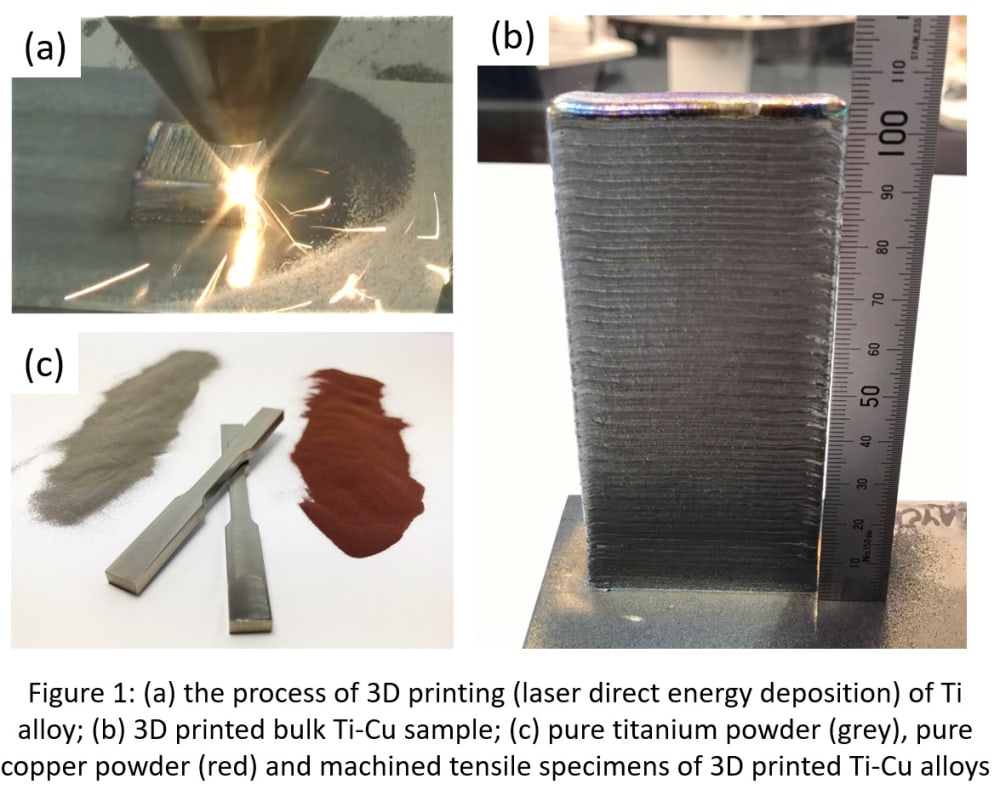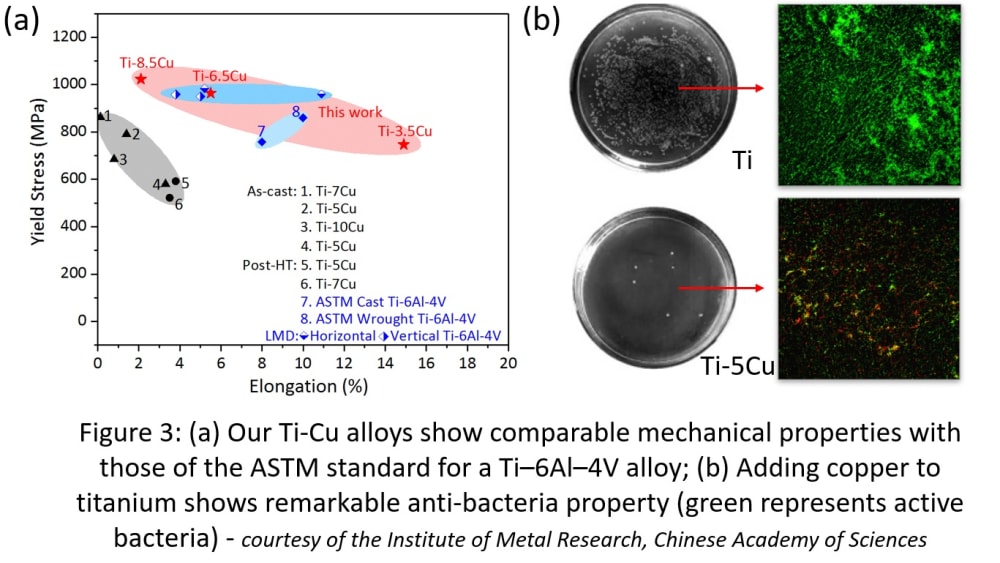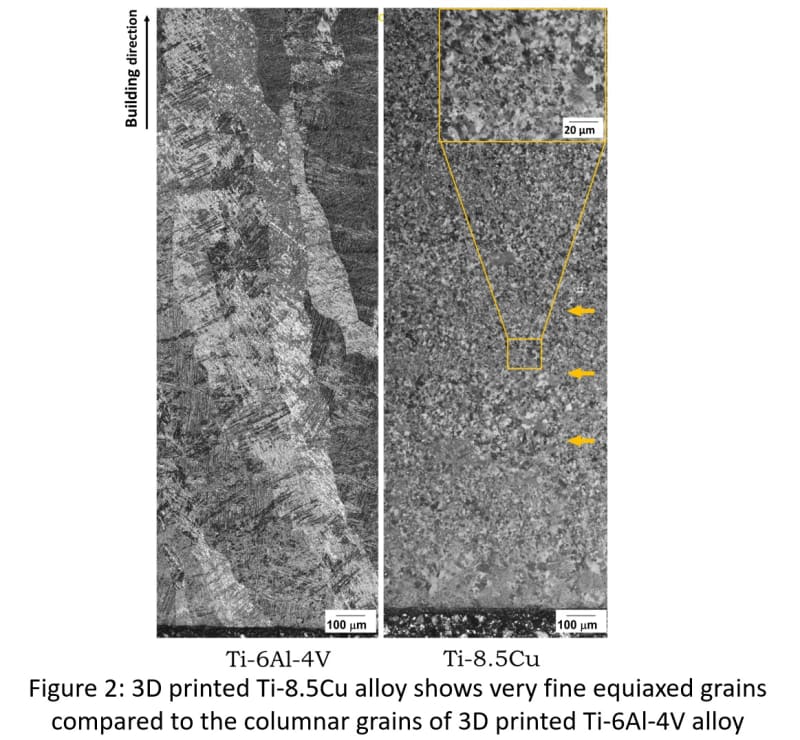

As global interest in Additive Manufacturing (AM, also referred to as “3D Printing”) grows, researchers and manufacturers in the world are making efforts to integrate AM technologies into the manufacturing industry. However, current titanium alloys used in AM often cool and bond together in column-shaped crystals during the 3D printing process, making them prone to cracking or distortion.
To solve this problem, we designed a new class of alloys (i.e. titanium-copper alloys) with high strength and optimum solidification behaviour for AM. The 3D printed titanium-copper alloys have fully equiaxed grain structure: this means the crystal grains had grown equally in all directions to form a strong bond, instead of in columns, which can lead to weak points liable to cracking. Additionally, our titanium–copper alloys printed with exceptional mechanical properties (e.g. strength and ductility) without any special process control or additional treatment.
The new alloy design idea we proposed here focuses on smart manipulation of the thermodynamics of alloying elements and the solidification conditions of AM synergistically. We took the full advantages of the constitutional supercooling capacity of alloying elements, as well as the unique thermal cycles during the layering process, to achieve microstructure refinement at different length scales (from millimetre to nanometre) in a one-stop AM process.
Titanium-copper alloys are one option, but there are also a number of other alloying elements that are likely to have similar effects. It could kickstart a new range of high-performance titanium alloys for medical device (e.g. implants, dental applications), defence (e.g. armors) and aerospace applications (e.g. engine blades, structural parts). Moreover, the new breed of alloys could increase manufacturers’ production rates and allow for more complex parts to be manufactured.
Moreover, compared to ferrous alloys that are widely used in above industries, these Ti alloys will be 40% lighter with the same damage tolerance requirements. The saving in materials and streamlining of AM processes will lead to extensive cost/energy savings and reduction in CO2 emissions compared to conventional processing, potentially benefitting society and the environment.
In general, our alloy design concept for AM opens up the possibility of developing a new range of titanium-based alloys specifically developed for 3D printing with exceptional properties.
Video
-
Awards
-
 2020 Manufacturing/Robotics/Automation Honorable Mention
2020 Manufacturing/Robotics/Automation Honorable Mention -
 2020 Top 100 Entries
2020 Top 100 Entries
Like this entry?
-
About the Entrant
- Name:Duyao Zhang
- Type of entry:teamTeam members:Duyao Zhang, Dong, Qiu, Mark Easton
- Patent status:pending








